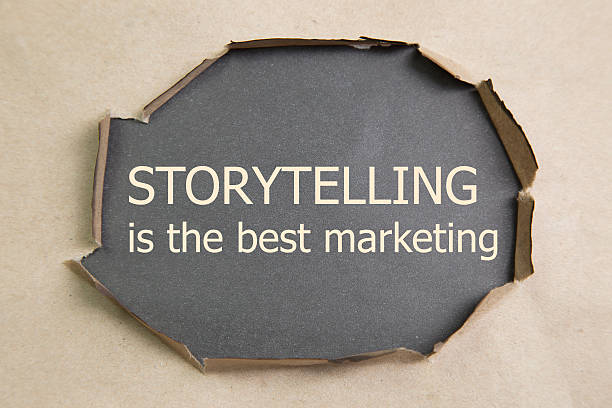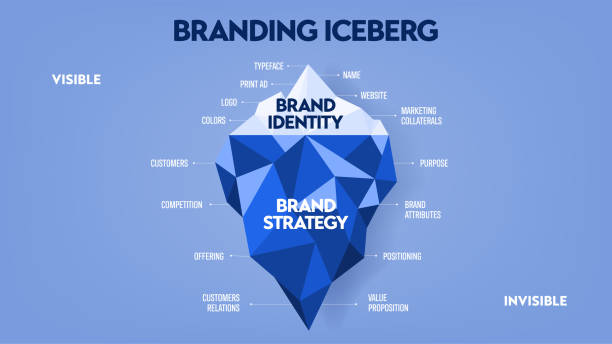Have you ever wondered why some brands stick in our minds while others fade away? So, think about the brands you trust and follow – there’s a good chance they tell stories that resonate with you. Storytelling has become an essential tool for connecting with customers in a memorable, impactful way. Also, it transforms brands from faceless entities into relatable, humanized presences that people can understand, trust, and even love. Have you ever wonder how to elevate your brand with storytelling techniques?
Storytelling for brands is more than simply sharing company history or product details. Additionally, it’s about creating a narrative that highlights your values, mission, and the real-world impact of your product or service. So, this narrative connects emotionally with your audience, encouraging loyalty and advocacy. But where do you start? So, let’s dive into the art of brand storytelling and uncover techniques that will help you connect with your audience on a deeper level.
Why Storytelling Matters for Brands
In a marketplace full of products, services, and endless advertisements, storytelling helps you stand out. Rather than focusing solely on what your product does, storytelling shows why it matters. Additionally, through storytelling, brands can reveal their unique personalities, foster trust, and build emotional connections. So, studies show that people are more likely to remember and engage with brands that share compelling stories, as storytelling taps into the human brain’s natural tendency to seek patterns, meaning, and connection.
Here’s what great storytelling can do for your brand: Brand With Storytelling Techniques
- Build Trust: A well-crafted story creates authenticity and fosters trust.
- Inspire Loyalty: Stories help customers feel a part of your journey, fostering loyalty.
- Differentiate: In a crowded market, a unique story can make your brand stand out.
- Engage Emotionally: Emotions drive decisions, and stories evoke emotions.
1. Define Your Brand’s Core Message
Every powerful story has a purpose – a “why” behind it. Why does your brand exist? What are the values and missions driving it forward? Moreover, defining your brand’s core message provides a foundation for every story you tell. So, consider the challenges your customers face and how your brand helps to solve them. You want to make sure that the essence of your story aligns with what your audience cares about, so think deeply about the intersection of your values and your customers’ needs.
Tips to Define Your Brand’s Core Message:
- Identify the core problem you solve for customers.
- Reflect on your brand’s mission and values.
- Connect these ideas into a clear, memorable statement.
2. Know Your Audience Deeply
Who are you speaking to? Understanding your audience is crucial for effective storytelling. Additionally, if you’re addressing different demographics, try to create distinct personas to ensure each story speaks directly to their needs and interests. Also, knowing your audience helps you speak to their emotions, aspirations, and pain points – which in turn enhances the relatability of your story.
Ways to Understand Your Audience:
- Conduct surveys and interviews with current customers.
- Analyze audience demographics and behaviors.
- Listen to customer feedback and reviews for insights.
3. Craft a Brand Personality – Brand With Storytelling Techniques
Stories that stick often have distinctive personalities. What would your brand be like if it were a person? Furthermore, giving your brand a personality helps to humanize it, making it easier for audiences to connect. This personality will inform the tone and voice of your brand, whether it’s bold and adventurous, calm and trustworthy, or innovative and forward-thinking.
Example:
- Adventurous: Perfect for brands in the outdoor or travel industry.
- Reliable: Suited for industries like finance, healthcare, or family care.
- Playful: Great for lifestyle brands, tech, or entertainment.

4. Use the Hero’s Journey Structure
The Hero’s Journey, a storytelling structure widely used in books and films, can be incredibly effective for brands too. Additionally, in this framework, a character (the hero) embarks on an adventure, faces challenges, and ultimately achieves something great. So, in brand storytelling, your customer is the hero who overcomes challenges with the help of your product or service.
Applying the Hero’s Journey to Your Brand:
- The Call to Adventure: Introduce the problem your customer faces.
- Crossing the Threshold: Show how your brand guides the customer toward a solution.
- The Return with the Reward: Share how your customer’s life is better with your brand.
5. Be Authentic – Don’t Sugarcoat It – Brand With Storytelling Techniques
In the world of polished advertisements, authenticity is a breath of fresh air. So, share your challenges, the hurdles you’ve overcome, and even some of your mistakes. Additionally, customers appreciate honesty, and authenticity can make your story more relatable. When people sense that you’re being genuine, they’re more likely to trust you.
6. Highlight Real Customer Stories
One of the most effective ways to tell a story is by letting your customers do it for you. Customer testimonials, case studies, and user-generated content are powerful because they provide social proof and show your brand’s impact on real people. Also, encourage satisfied customers to share their stories with your product, and highlight them across your channels.
Ideas for Customer-Centric Storytelling:
- Feature customer testimonials on social media.
- Create case studies showing how your product has made a difference.
- Share video testimonials or “a day in the life” stories.
7. Incorporate Visuals to Enhance the Story – Brand With Storytelling Techniques
As the saying goes, “a picture is worth a thousand words.” In brand storytelling, visuals such as images, videos, and infographics add a layer of richness. So, they can illustrate key moments, evoke emotions, and keep your audience engaged. Visual storytelling also helps reinforce your brand’s tone, whether through sleek product shots, behind-the-scenes footage, or lifestyle imagery.
How to Use Visuals Effectively:
- Use videos for product demos, customer stories, or brand narratives.
- Add infographics to share data in a story-driven format.
- Share behind-the-scenes photos to make your brand feel more personal.
8. Create a Consistent Narrative Across Channels
Consistency is crucial in building a cohesive brand. So, your story shouldn’t vary drastically from platform to platform. Instead, create a consistent tone and message that resonates across all your marketing channels, whether it’s on your website, social media, or email campaigns.

Tips for a Consistent Narrative:
- Develop a brand voice guide to keep messaging aligned.
- Use similar visuals, colors, and fonts for recognizable branding.
- Share the same key message, adjusted for different formats.
9. Measure the Impact of Your Stories – Brand With Storytelling Techniques
Measuring storytelling success can be challenging, but tracking metrics like engagement, website traffic, and conversion rates can help determine what resonates with your audience. So, look at data over time to understand how storytelling impacts your brand’s perception and effectiveness.
Metrics to Track:
- Engagement rates on social media (likes, shares, comments).
- Customer feedback through reviews and surveys.
- Conversion rates and time spent on content-driven pages.
10. Evolve Your Story
Your brand story isn’t static – it’s a journey that grows with you. As your business evolves, so should your storytelling. Moreover, show customers how you’re innovating, adapting, and making a difference over time. Also, it’s an opportunity to continue building trust and to keep people interested in your journey.
Steps for Evolving Your Story:
- Share major company milestones and achievements.
- Talk about new challenges and how you’re tackling them.
- Keep content fresh with regular updates and new perspectives.

Conclusion: Transform Your Brand With Storytelling Techniques
Storytelling is more than a marketing tactic – it’s a way to create meaning and build a lasting connection with your audience. By sharing genuine stories, focusing on what matters most to your customers, and evolving your narrative over time, you can turn your brand into more than a business – you can make it a part of your customers’ lives.
So, are you ready to elevate your brand with storytelling? So, start by defining your core message, understanding your audience, and telling stories that resonate. With these techniques, you’re well on your way to creating a brand that people not only remember but also love.








[…] brands are embracing candid visuals that reflect real people and genuine experiences. So, using storytelling in your visuals can make your brand relatable, adding a human touch that resonates more deeply with […]